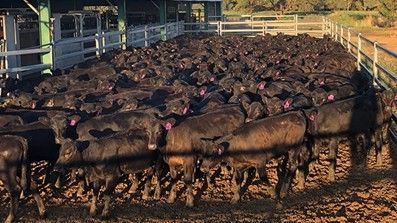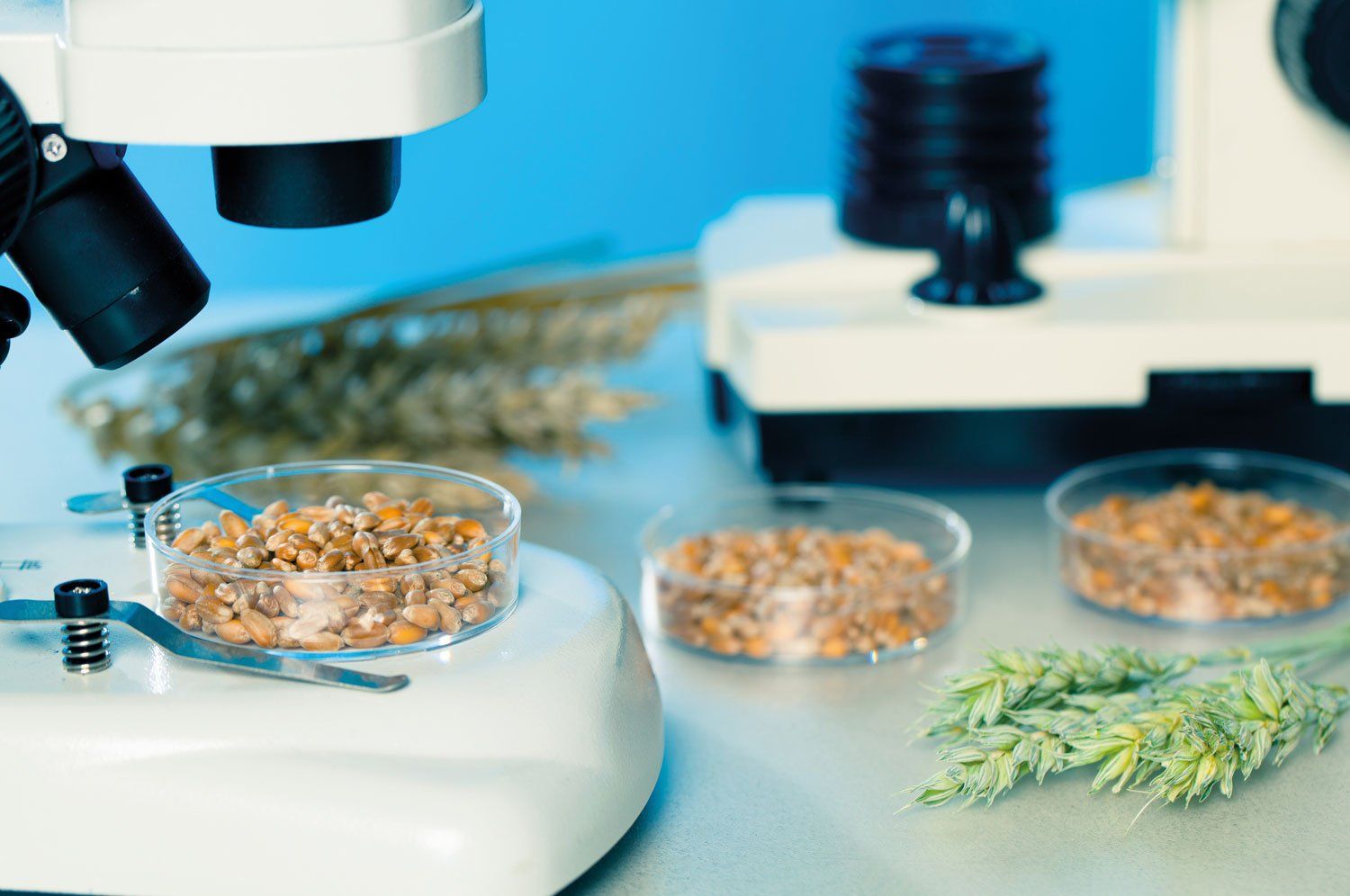1MG FlippingBooks
The science is settled GM food is safe
In recent years there has been a scare campaign against genetically modified food. Asher Judah finds not only is the technology safe, it is necessary if Australia is to fulfil its agricultural potential.
The science is settled. The debate is over. Genetically modified (GM) food is safe. It is safe for animals, safe for people and safe for the environment.
In fact, GM food is so risk-free that humanity and its vast food production systems have functioned for almost 20 years without one single reported health incident.
Since 1996, almost 100 billion food producing animals in the US have consumed genetically modified food products. And the science shows that throughout the lives of each of these animals, no animal health agency has recorded a GM related animal health incident.
The same is also true for human consumption of food products containing GM ingredients. According to the European Commission, in the past 15 years an estimated two trillion meals containing GM food products have been consumed. These meals have been eaten by hundreds of millions of people across dozens of countries all over the world. And during this time, not one health incident has been reported by a recognised human health authority.
So why all the fuss?
If genetically modified food is safe, and if this food enjoys the same nutritional equivalency of non-GM food, why all the fuss?
Why, after thousands of scientific studies confirming that GM food has no effect on human health, are people still worried? The answer is simple. The anti-science lobby has been infinitely more effective at spreading fear than the pro-science lobby has been at disseminating fact.
Organised opposition to genetic modification technology is one of the biggest challenges preventing Australia’s embrace of more productive farming techniques. At present, community opposition to GM technology consists of environmental activists, anti-GM farmers, food advocacy organisations, dedicated organic farmers, religious organisations and those opposed to what they call “the private ownership of life”.
The methods employed by these groups are both obvious and varied. But the most effective strategies have involved the deployment of emotive fear campaigns arguing any number of the following fallacies: erroneous or unsubstantiated health risks linked to eating GM foods, the release of dangerous genetically modified organisms, a reduction in natural enemies, the rise of secondary pests, the destabilisation of insect ecologies, the rise of herbicide resistant superbugs, increased herbicide and chemical use, and the loss of international consumer markets.
As a result of these emotive and effective campaigns – none of them based on evidence – significant damage has been done to Australia’s once envious scientific record. Australia has grown GM cotton since 1996 and was a world leader in the science. More than 95 per cent of Australia’s cotton crop is now comprised of some form of GM cotton (Senate Estimates, May 2011, Supplementary Brief, p. 2), lifting farm income by $395 million – an average of $180 per hectare (National Press Club Address, 20 September 2012, Graham Brookes, The global economic and environmental impact of GM crops).
But today, Australia is arguably about a decade behind its main international competitors, exposing farm communities and the biotechnology sector to economic risk and obsolescence. If Australia is to reverse this trend before the development gap becomes insurmountable, it will need to act boldly and quickly.
Why does it matter?
Why should we be so concerned? Aren’t Australia’s farmers successful enough to go without the need to purposefully alter nature? A fair enough question, but the uncomfortable truth is that nothing stays the same forever. Just as computerisation and mechanisation have revolutionised the way we work, genetic modification is changing what we grow and how productively we grow it. And the evidence internationally is very clear.
Since 1996, GM crop hectares have increased a hundredfold to 181.5 million hectares in 2014. The US is now the world’s largest agricultural exporter and grower of genetically modified crops, with 73.1 million hectares under cultivation. It also enjoys a near 90 per cent average adoption rate across all biotech crops (ISAAA Brief 44-2012: Global status of commercialized biotech/GM Crops: 2012, Executive Summary, New York, 2012, Table 1) – a clear sign of community acceptance.
The US is not alone: 28 other nations across both the developing and developed world embraced genetic modification technology in 2014. Brazil, Argentina, Canada, India, China and South Africa all have vast tracts of land in GM crop production. Combined, the nations within South America, Asia and Africa are now responsible for 54 per cent of global GM crops farming a total of 94.1 million hectares – more than 100 times Australia’s share.
Due to the many well-documented productivity improvements, global interest in producing GM crops has exploded, with double digit growth rates ocurring for twelve years straight, according to industry body ISAAA (International Service for the Acquisition of Agri-biotech Applications).
As of 2012, 81 per cent of global soybean planting, 81 per cent of global cotton planting, 35 per cent of global maize (corn) planting and 30 per cent of global canola planting used genetically modified crops. Interest in genetically modified alfalfa, sugar beet, potato, papaya, squash, poplar, tomato and rice are also all now gaining ground.
The undeniable benefits
The reason for the rapid global uptake is clear. Genetic modification is one of the most important technological innovations of our lifetimes. It is also one of the most powerful. By allowing its users to modify organisms to exhibit new traits to the benefit of the modifier, genetic modification gifts its users the power to change the world. Some of the many benefits can include:
- higher living standards
- stronger productivity
- better yields
- accelerated cultivar development
- increased farm incomes
- lower input costs through less use of pesticides, herbicides,
- fertilisers and water
- improved environmental outcomes.
At the farm level, GM technology can also bring about many significant productivity improvements worth a great deal to farmers. These include:
- resistance to pests and diseases
- different development and ripening speeds
- production of larger fruits and seeds
- higher nutrient levels
- improved post-harvest qualities
- greater absorption of light, nutrients and water
- better resilience for storage and transportation
- stronger tolerance for climates previously deemed too dry, high, wet, cold, frost effected, saline or nutrient deficient.
Put simply, genetic modification technology is revolutionary. Managed successfully, it could transform the agricultural productivity of the entire planet. But Australia is at risk of missing out on this opportunity.
The possibilities for Australia
As the sixth largest nation by area in the world, Australia is home to 5.9 per cent of the world’s land. With this tremendous land endowment comes great responsibility – and great opportunity. With the benefit of genetic modification technology, Australia’s farmers could open up new areas to agriculture and lift yields in poor performing areas. They could help counteract soil salinity and help grains fix their own nitrogen, augmenting the growing cycle. They could kill pests and disease and extend produce storage life.
If managed correctly, the possibilities of GM could be endless. Imagine the economic benefits of being able to grow what we want, where we want, at the most economically efficient price we can. In the hands of responsible and entrepreneurial farmers, GM could redefine the meaning of prime agricultural land and return degraded land to production.
It could breathe new life into Australia’s poorer rural communities and unlock the tropical Far North and temperate south to greater investment, increase national income and economic activity.
Put simply, GM technology has the potential to transform vast sections of Australia’s land mass into agriculturally productive territory. It could also ensure large parts of the Australian environment remain undisturbed, by boosting yields on existing farmland. Whether it is to expand or protect, enhance or specialise, the possibilities for our continent are limitless.
We must act now
Australia presently faces the very real possibility of becoming uncompetitive in the world’s agriculture, aquaculture and forest product markets. As of 2012, only 700,000 hectares of Australian farm land hosts genetically modified crops, largely cotton and canola (ISAAA Brief 44-2012: op. cit., Executive Summary, Table 1). This represents less than 0.005 per cent of the total amount of land used for genetically modified crops worldwide.
If Australia is to secure a growing share in global agricultural markets, unlock the continent’s full potential and become a leader again in genetic modification, fundamental policy reform must take place. There are several key areas where action must be taken. These are:
- reducing the cost of genetic modification commercialisation
- accelerating genetic modification trial approval
- removing state genetic modification moratoriums
- creating a stable regulatory environment
- lifting segregation tolerance levels
- repelling genetic modification labelling requirements
- boosting community confidence in genetic modification products.
If Australia can undertake these reforms, then the vision of boundless plains of opportunity could be truly realised. If not, the nation risks missing out on the next step of its economic and technological development.
Since the Neolithic revolution, humanity has almost continuously laboured to improve the productivity of its agricultural activity. This process has transitioned through various stages of revolution from the ancient domestication techniques, to the first Columbian Exchange, to the British Agricultural Revolution, to the adoption of mechanisation and more recently, through the Green Revolution.
Wherever one looks, humanity has nearly always strived to lift its agrarian productivity through the eager embrace of technology and improvements in operational technique. But over the past 20 years Australia has walked away from this history as a result of fear, misunderstanding and mistruths.
The time has come to reaffirm our faith in science and embrace the economic and developmental opportunity which accompanies it. Australia has a great farming future ahead of it. It’s time we go back to growing it.
About the author: Asher Judah is a policy and media professional with over twelve years’ experience with industry associations in the property, construction, manufacturing and farm business fields. He is the author of the public policy book, The Australian Century. He has been published on a number of public policy matters including cities, planning, population growth, agriculture, China and the environment. He is also a contributing author to the public policy books, Right Social Justice: better ways to help the poor and Really Dangerous Ideas.

A selection of The Australian Farmer Sponsors - Click on a banner below to find out more...
















